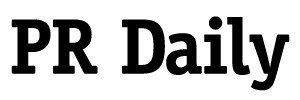A communications framework for healthcare’s next big conversation
It’s time to tap this underserved market.

Meghan Powers is group vice president and deputy healthcare practice leader at The Bliss Group.
Menopause represents one of healthcare’s most significant yet underserved markets, traditionally seen as not requiring the healthcare industry’s attention or resources. With 62 million women over 50 in the United States and 6,000 women entering menopause daily, this demographic transformation demands attention from the entire healthcare ecosystem — providers, payors, plan sponsors, purchasers and product makers, and the professional communicators for the industry.
Our healthcare system — and society as a whole — has only recently begun addressing menopause comprehensively and having open conversations about this important event in women’s health. In addition, the topic is becoming substantially less stigmatized as demonstrated by the increase in references and conversations in pop culture, with celebrities such as Drew Barrymore and Gayle King openly talking about their experiences with this life stage.
For employers, the workplace impact is particularly noteworthy. With 20% of the workforce affected, menopause benefits have emerged as a crucial differentiator to attract and retain experienced talent. Companies are finally waking up to the fact that menopause is a ”silent” reason that experienced professionals sometimes exit their organization and the workforce, resulting in significant experience and productivity losses. This quiet exodus of talent represents both a challenge and an opportunity for forward-thinking organizations.
Beyond workplace implications, menopause profoundly affects women’s health across multiple dimensions: cardiovascular health, cognitive function, bone density, mental wellbeing and more. As a result, the menopause and menopause treatments market is expected to reach $27.6 billion by 2033.
Strategically shaping menopause communications
As the healthcare industry and society’s need for effective, accessible menopause care and treatments continues to rise, communications professionals play a pivotal role in addressing these challenges, crafting messages that resonate with diverse audiences while strengthening organizational reputation and building affinity between customers and brands. Success requires a framework built on three foundational elements: evidence-based medical information, real-world audience insights and cultural sensitivity.
Whether for internal communications to employees or when working with a company targeting people experiencing menopause, the most effective approach centers on data-driven insights that help brands meet women where they are. By first listening to how health conditions are discussed, communicators must develop authentic messaging that resonates across audiences while mitigating potential risks or creating content that is “cringe,” or worse, prompts a backlash.
Building trust internally
For internal communications, communications strategies should focus on actively engaging with and listening to an organization’s workforce to gain deep insights into how employees navigate significant life transitions, such as menopause. Organizations must create structured feedback channels to understand employee experiences, which inform the development of comprehensive resource toolkits and messaging. These could include educational materials, manager guidelines and benefits navigation resources. Leadership enablement becomes a crucial conduit to employee engagement through executive training programs focused on presentation coaching and messaging workshops. This preparation ensures leaders can authentically address menopause-related topics while fostering an inclusive workplace culture.
Advancing reputation externally
An external communications framework should center on creating a robust content foundation that powers broader marketing initiatives. This includes developing educational resources, expert perspectives and patient journey narratives that can be adapted across channels. The key is maintaining authenticity while ensuring medical accuracy and accessibility. Organizations can amplify their message through strategic thought leadership placement, expert commentary and research-based storytelling, creating multiple touchpoints for engagement across shared, owned, and earned platforms.
Success metrics for both internal and external initiatives should focus on measurable outcomes over time. Internally, track employee satisfaction, retention rates and program participation. Externally, monitor share of voice, message penetration and brand reputational measurements.
As menopause communications evolve from taboo to a strategic priority, organizations have a unique opportunity to lead meaningful change while strengthening both internal and external stakeholder relationships and business outcomes. By implementing these approaches, communications professionals can help transform the menopause narrative and deliver tangible results for their organizations, all while also contributing to broader cultural change around menopause awareness and support.






